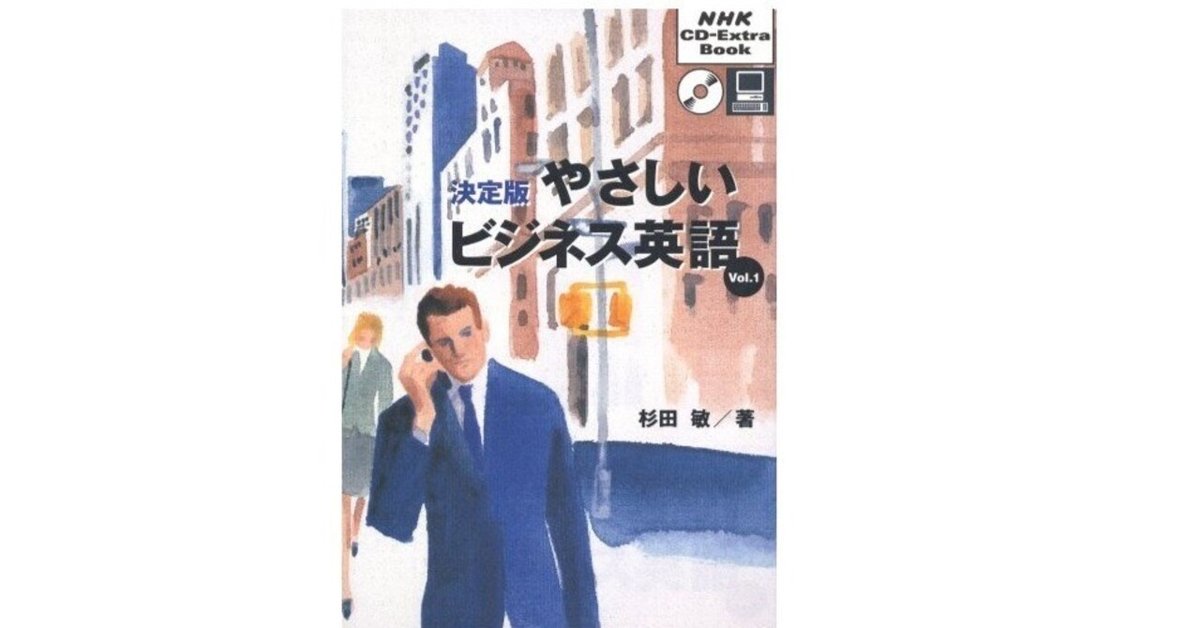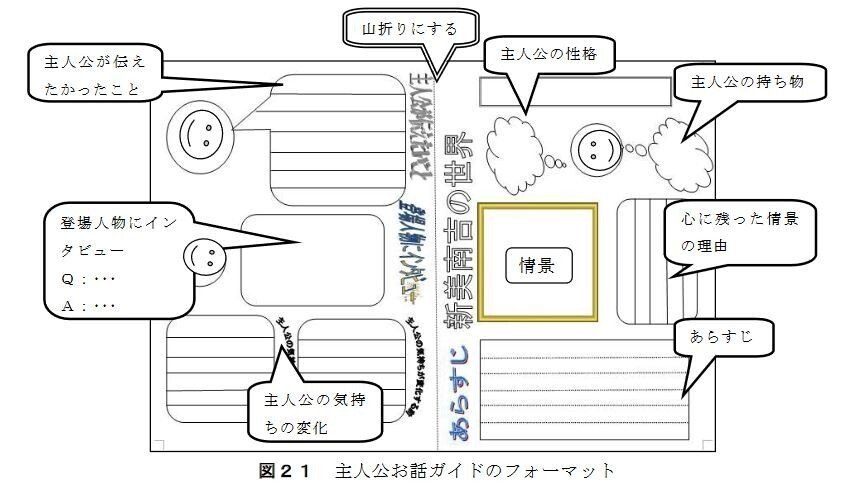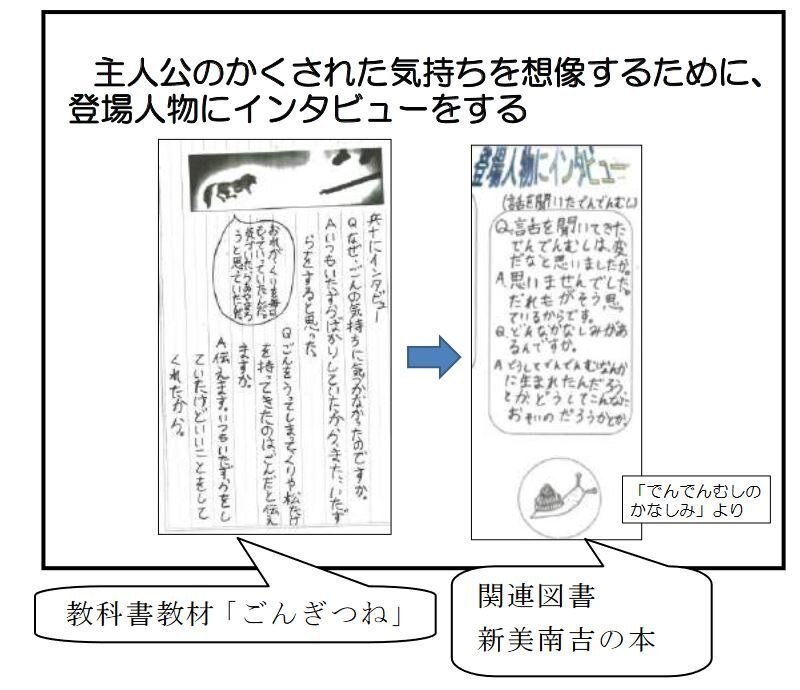
「ごんぎつね」の授業の多様性
"diversity"という英語の言葉を初めて聞いたのは、NHKラジオの「やさしいビジネス英語」という番組の中だった、と思う。
それは十年以上前のことで、「多様性」などという言葉は、今のように頻繁には使われていなかった。
その意味で、この番組はかなり先駆的だったと思う(ただし内容は難しく、番組名と違って、全然やさしくない、と思ったものだ)。
今では「多様性」を大事に、というニュアンスで使うことが多いと思うのだが、「ごんぎつね」の授業は、前にも書いたように、教師の数だけ多様性を維持しているようだ。
「ごんぎつね」のクライマックスは2つ考えられるが、正しいのはどちらか?ということを考えさせる、個性的な授業もある。
詳しくは、上のサイトを見ていただきたいが、教師はなぜこんな問題を生徒に考えさせるのだろうか?おとぎ話の書き方のテクニックを学ばせたいのだろうか?
私は、宿題の漢字ドリルをたくさんさせられたことは覚えている。しかし、小学校の国語の授業の内容など全く覚えていない。だから小学校の国語の授業の内容が、人生に影響したかどうかはわからないが、これまでに取り上げた「ごんぎつね」の授業は、納得がいかない。
最後に、この記事で参照した、国語教師の大村はまさんによる、「ごんぎつね」の授業内容がここに残っているので取り上げてみよう。
物語文での学習では,「紹介カード」にまとめることを言語活動として「あらすじ」「中心人物の性格」「気持ちの変化」などを読み取った。これらをさらに深めて,「主人公が伝えたかったこと」や「登場人物にインタビューすること」などを付け加え,物語を読み取るための想像する力を付けることをねらいとした。
単元の導入では,主人公や登場人物の気持ちのすれ違いが書かれた教科書教材を学習しながら,新美南吉の生き方が反映された物語を読み,心に残ったところを伝える「お話ガイド」を作る学習の見とおしやゴールをもつようにする。
展開部分では,教科書教材「ごんぎつね」で主人公「ごん」の登場人物「兵十」に対する思いを読み取りながら,「ごん」の思いや伝えたかったことを児童が代わって想像し,お話ガイドにまとめる。
お話ガイドが完成したら,発展部分で「お話ガイド」を紹介し合い,新美南吉の物語を読んでも一人一人感じ方について違いがあることに気づくことができるようにする。

この授業では、生徒の側からの提案に基づく学習もあった。
「ごんぎつね」で主人公の気持ちを想像するために登場人物にインタビューをするということを取り入れた。
初めは,教師が登場人物の「兵十」にインタビューするという形で質問を設定し,それに対して児童はどう答えたのか想像させるという形で学習をすすめた。
しかし,途中から児童がさらにインタビューをしたいということで,自分で質問を考え,答えも想像しながら学習をすすめていくことができた。
これは,その後の関連図書でのお話ガイドづくりにも活かされ,Q&A形式で登場人物にインタビューして考えを深める様子が見られた。

子どもの自発性も引き出す、このやり方が、私は一番いいと思う。オーソドックスだが、それゆえに生徒を取り巻く外部環境が変わっても、対応できるだろう。
今時の教師たちは、先達の仕事を学ぶこともなくやっているのだろうか。もしそうなら、もったいないことである。
Diversity of Teaching Methods of Gongitsune
I think the first time I heard the English word "diversity" was on the NHK radio program "Yasashii Business Eigo". That was over a decade ago, and the word "diversity" wasn't used as often as it is now.
In that sense, I think this program was quite pioneering (although unlike the program name, I thought it was not easy to learn the program at all).
Nowadays, it is often used with the nuance that "diversity" is important, but as I wrote before, the teaching method of "Gongitsune" maintains as many diversity as there are teachers.
There are two possible climaxes for Gongitsune, which one is correct? There are also unique classes that make students think about such things.
For details, please see the above site, but why do teachers make students think about such problems? Do you want them to learn the technique of writing fairy tales?
I remember having to do a lot of homework kanji drills. However, I don't remember anything about the content of Japanese classes in elementary school. So I don't know if elementary school Japanese language classes have had an impact on my life, but I'm not satisfied with the "Gongitsune" classes I've taken up so far.
Finally, let's take a look at the "Gongitsune" lesson by Japanese language teacher Hama Omura, which was referenced in this article.
In the study of narrative texts, compiling ``introductory cards'' was a language activity for reading ``synopsis'', ``characters of central characters'', and ``changes in feelings''.
The aim was to further deepen these and add ``what the main character wanted to convey'' and ``interviews with the characters,'' with the aim of developing the power of imagination to read the story.
In the introduction of the unit, students read a story that reflects Nankichi Niimi's way of life while studying textbook materials that describe the misunderstandings between the protagonist and other characters.
The teacher guides the student to have learning perspectives and goals to create a "story guide" that tells the story.
In the development part, while reading the feelings of the main character "Gon" for the character "Heiju" in the textbook material "Gongitsune", the children imagine what "Gon" wants to convey and what he wants to convey. Then the students put it together in a story guide. After the story guide is completed, the teacher guides the students to introduce the "story guide" to each other in the development section so that they can notice that each person has a different way of feeling when reading Nankichi Niimi's story.
In this class, there was also learning based on suggestions from the students.
In "Gongitsune," I incorporated interviews with characters in order to imagine the feelings of the main character.
In the beginning, the teacher set questions in the form of an interview with the character "Hyoju", and the students were asked to imagine how they would answer the questions.
However, halfway through, the children wanted to do more interviews, so I was able to proceed with the study while thinking up questions and imagining the answers on my own.
This was also used in the creation of story guides for subsequent related books, and it was seen that the characters were interviewed in a Q&A format to deepen their thoughts.
I think this is the best way to bring out the spontaneity of children. It is orthodox, but because of that, even if the external environment surrounding the students changes, it will be able to respond.
Are today's teachers doing the work of their predecessors without learning? If so, it is a waste.
この記事が気に入ったらサポートをしてみませんか?
